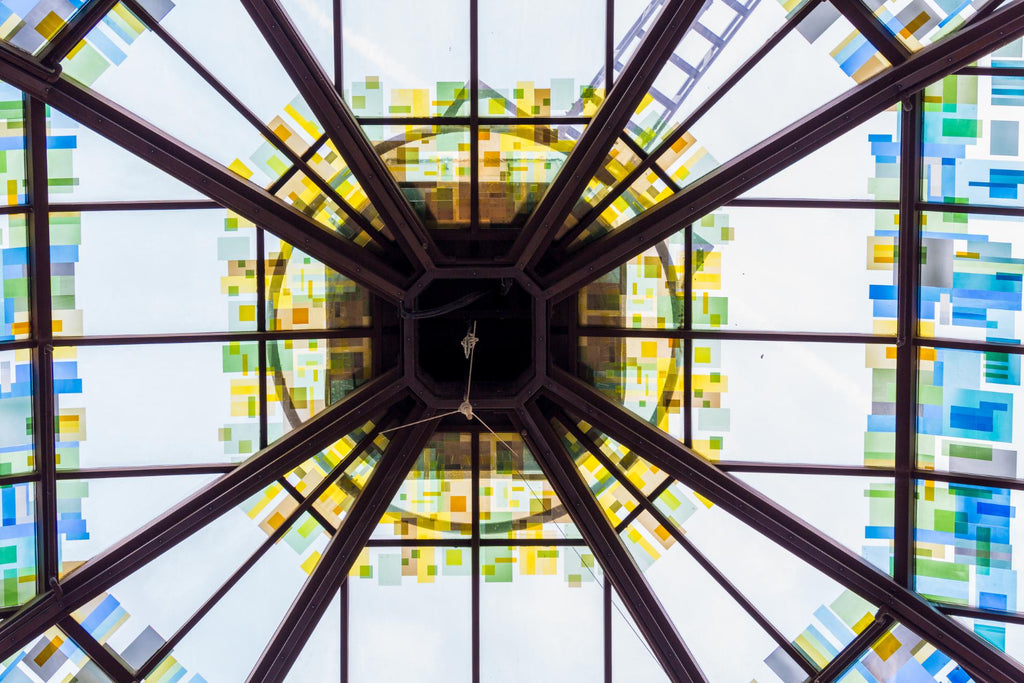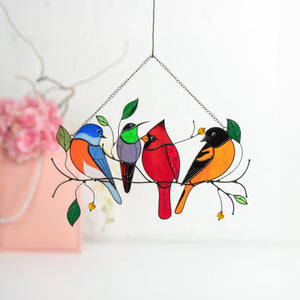The Symbolism of Color in Stained Glass
Stained glass has been a prominent artistic and architectural element for centuries, and the use of color in stained glass hanging panels for windows carries rich symbolism.
Important steps in the development of stained glass art were the color palette, and each new color, shade and experiment, which ended successfully, became another small achievement of stained glass masters and mosaicists. All this happened against the backdrop of relatively small successes in glassmaking, which had been achieving success for a long time and did not reach their intended goals.

Unveiling the Meaning of Colors
It is interesting to note that color symbolism was common knowledge among glass artisans, as well as artists and illuminators of the time. The masters always use high-quality materials for stained glass and a combination of the colors to convey complex meanings. Additionally, the placement and arrangement of colors within a design can influence the overall symbolism.
It's important to note that interpretations can vary, and the specific context, cultural background, and artistic intent play crucial roles in understanding the symbolism of colors in stained glass:
- Red or "vermilion" in its purest form is the color of divine love, the Holy Spirit, courage, self-sacrifice, the reign of the tyrant and all the warm impulses that belong to great hearts everywhere. This is a warm active color.
- The blue color of the Middle Ages was pure cobalt, often obscuring deep light, approaching sapphire. Blue is heavenly light, a contemplative color, an ideal film for red. The color blue also symbolizes deep meditation, enduring loyalty, eternity.
- Gold (yellow) is a symbol of the sun, the goodness of God, treasures in the sky. Gold is the color of spiritual achievement, ripe harvests or the good life, and as such it merges into golden browns and oranges and is reminiscent of the good treasures of the earth.
- The color green, combining the "wisdom" of blue with the "wealth" of gold, symbolizes hope and victory over stupidity and ignorance. Green symbolizes happiness with the fun that we associate with spring and youth. It symbolizes good humor and fun.
- White is the color of peace and tranquility, purity and joy, which belongs to people who are pure in heart. It is a symbol of faith as well as innocence.
- Violet, combining "wisdom" and "love", symbolized by blue and red, a symbol of justice and aristocracy. It also signifies suffering and mystery, and the color glass for black expresses denial, mourning and death. When set with white it signifies humility and purity.
The combination of these colors in stained glass windows can convey complex narratives and theological concepts, making them an integral part of religious and cultural expression. Additionally, the artistic choices made by stained glass artists can vary, allowing for personal interpretations and unique expressions of symbolism.
The Role of the Light in the Stained Glass
Light has always been used as a means of aesthetic influence on the viewer: light depicted the image of the era, reproduced its philosophical and ideological priorities.
The beauty of stained glass lies not only in the fact that it is made of glass, but also in the fact that a picture created in this way will never change its bright colors and outlines. And the play of pouring or fading light and glare in such a picture will always excite the imagination.
Stained Glass Creates the Atmosphere
It has been known since time immemorial that color can have a powerful effect on a person's mood. Colored stained glass windows have a unique effect on the energy of the premises and human consciousness in such a way that the interior is perceived in a completely different way. Under the influence of stained glass windows, the space can become more majestic, solemn or comfortable and cozy.
If there is a need to enliven the interior, create something memorable and, nevertheless, not flashy, or hide some defect, stained glass will be the most optimal and not a compromise solution.
Tips for Choosing Colors in Stained Glass
The psychologists advise choosing yellow, green, pink and bright red for stained glass windows in the interior of children's rooms; to create an atmosphere of romance - purple, pink, red; for rest - brown, blue, pink, orange; to create a holiday atmosphere - blue, white, yellow, pink, purple, green; for working premises - brown, blue, yellow, white, green.
Not only color, but also the shape of individual fragments of colored stained glass is important when designing and creating a product. Stained glass windows, which consist of geometric shapes, generally have a favorable effect on the psyche. Some prefer stained glass windows with a meaningful load, people with a creative mind like stained glass windows with abstract images.
Stained Glass as a Lump of Energy
Glass is a fashionable, interesting, noble material of the present and the future, which has already become indispensable for people who want to live in a clean ecological environment. Transparent things turn the space into a special cultural world in which the play of light and shadows is perfect. Stained glass allows a person to communicate with the outside world and at the same time gives the opportunity to isolate themselves from it for a while behind the translucent works of stained glass artists, because stained glass is not cold planes of glass, but a lump of energy that pulsates in time with the heart of the artists, their soul and thought.







